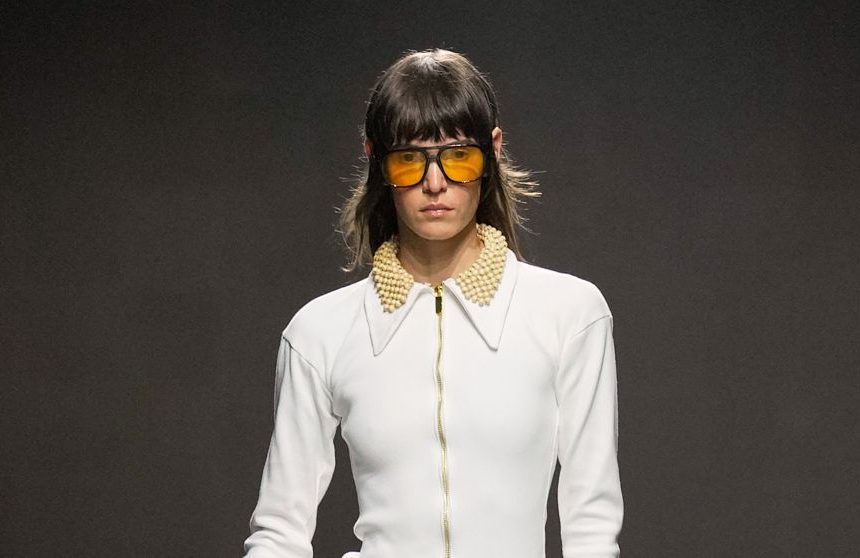OXFORDSHIRE, United Kingdom — We’re living through a moment of global upheaval. Governments are contending with seismic shifts in trade and geopolitics. Corporations and their workforces are grappling in real-time with how to adapt to advances in artificial intelligence. Vulnerable communities from LGBTQ groups to immigrants are facing a rise in hate and exclusion.
At the first session of VOICES 2025, the tenth anniversary of BoF’s annual gathering of big thinkers, speakers from actor and activist Riz Ahmed to designers Clare Waight Keller and Maria Cornejo addressed these and other issues as they examined the wider world. Despite the gravity of the challenges in the world, members of the fashion industry are not powerless to address them, they insisted.
“This is a room full of storytellers,” Ahmed said. “We need to rediscover the radical purpose and truth at the heart of storytelling.”
That purpose, he said, is not to create more distraction with shallow internet content but to remind audiences that, regardless of their superficial differences, they are part of a shared humanity. Ahmed, who stars in a new contemporary adaptation of Shakespeare’s “Hamlet,” argued Hamlet’s famed “To be or not to be” speech isn’t about suicide, as it’s often interpreted, but about resistance.
“‘Hamlet’ is about somebody who is grieving the illusion that the world is a fair place,” he said.
The author has shared a YouTube video.You will need to accept and consent to the use of cookies and similar technologies by our third-party partners (including: YouTube, Instagram or Twitter), in order to view embedded content in this article and others you may visit in future.
Choosing Inclusion Over Exclusion
Connection was a prominent theme of the session. Documentary director and activist Deeyah Khan spoke on stage to British television presenter June Sarpong about the surge in racism and nationalism taking place in countries such as the US and UK. While it’s tempting to ostracise or act violently toward those we disagree with, and who may even deny our humanity, Khan argued it’s the wrong approach.
“Inclusion cannot be afforded only to people we like and agree with,” she said, insisting the way to push back is by engaging these groups and understanding them.
Khan and Sarpong also spoke about the rolling back of diversity, equity and inclusion programmes in the corporate world. The backlash is actually a sign that the efforts to knock down racial and gender barriers are working, Khan said, though she also acknowledged that not enough has yet changed.
Systemic barriers are all too familiar for Waight Keller and Cornejo. Both are female designers in an industry whose top creative roles remain heavily dominated by men, even though the great majority of fashion school graduates are women. Waight Keller believes part of the issue is the narrative that’s been constructed around men and women in design jobs.
“Men are often seen as the implementers of big change, and women of stability, and so with stability we’re often also cornered into a commercial sense of aesthetic,” she said.
Women make clothes that are less adventurous and more wearable in this narrative. Both Waight Keller and Cornejo pushed back against this notion, saying that women aren’t less creative but simply more considerate of how real women want to dress, which is partly by many of the independent brands run by women make most of their money from selling clothes as opposed to handbags or shoes.
“There’s a big disconnect in the fashion business,” Cornejo said. “I think that’s why the fashion business is not doing that great in the whole, because there is that disconnect from what’s Instagram, what is social media [and] what is actual reality.”
Where Fashion Can Lend Its Support
The activist and writer Marley Dias spoke about other ways that fashion businesses often focus on the wrong things.
“Somehow along the way, I think that we started counting wrong: We count followers, impressions, brand activations,” she said. “We measure visibility and not value. We undercount our villains — the systems that exploit and pollute and exclude us — and we overcount our heroes, these miraculous leaders that swoop in and fix everything.”
What the world needs isn’t more global saviours but rather local connections and programmes. She suggested that businesses direct more investment to projects that deliver real local impact and measure the results, such as how many jobs were created, or apprenticeship hours funded. She issued a challenge to the fashion leaders in the room: In the next 90 days, partner with a community organisation in a city or town where their business operates and fund a project that builds up that community, tracking and publicising the impact.
“Do not do it for optics, but for ownership,” Dias said. “Not as charity, but as investment, making it an experiment in truly counting what counts.”
Jeremy Heimans, an Australian entrepreneur and activist, issued another directive to the attendees. At a moment when LGBTQ rights are under threat in nations such as the US, it’s imperative that queer people in power, including the many in the fashion industry, extend their support to one another in the way other groups from diaspora communities to religious associations do.
“Now is the moment where we have to take our own power very seriously,” he said. “We need to join forces, get smart and recognise that our destinies are intertwined and that we owe something to each other.
Information Overload
None of this comes at an easy moment. Fashion businesses anticipate a challenging year ahead, according to the BoF-McKinsey State of Fashion 2026, while the macroeconomic outlook remains confusing. Lucy Baldwin, global head of research at Citi, noted that this year has defied expectations to some degree. Economists expected US president Donald Trump’s tariff onslaught would markedly slow global growth, but so far, no massive slowdown has materialised.
That doesn’t mean businesses should breathe a sigh of relief just yet, however.
“The question we get all the time is, ‘Ok, so are we out of the woods? Is it all OK? I think unfortunately it’s a little bit too soon to say,” she said.
China has managed to route many of its goods originally meant for the US to other countries. In the US, meanwhile, many companies front-loaded their imports to get them into the country before tariffs took effect, meaning the full impact of the duties has been slow to show up. It will take time for the full picture of how the global economy has changed to become clear.
What is clear is that the job market in the US is starting to show signs of weakness, though that hasn’t had much effect on the stock market, which is in the midst of an AI boom. Concerns of a bubble are growing, though Baldwin pointed out that, so far, the AI giants still have strong cash flows. They’re only just now reaching a point where they’re looking to fund future growth with debt. Everyone will be watching. Executives in the meantime are looking to AI to boost their productivity and efficiency in what’s likely to be a major shakeup of the workforce that will require reskilling a large number of workers.
It won’t be AI’s only impact. Humans today have greater access to the accumulated knowledge of history than ever before, a state that AI is now contributing to, said Alexander Asseily, founder and chief executive of Zulu Group, a venture studio that invests in projects aimed at solving societal and planetary challenges. But we can feel overwhelmed by that information as much as we’re empowered by it, and it’s our responsibility to judge what we’re consuming and how we pass it along to others.
“We get collectively wiser by becoming better nodes in the human information network ourselves,” Asseily said.
BoF VOICES 2025 is made possible in part by our partners McKinsey & Company, Amazon Fashion, Pixel Moda, Value Retail, Certilogo, Swap Commerce, Soho House, Wheely and Getty Images.


